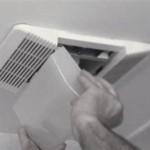How To Clean Mold From Bathroom Tile Grout
Mold in bathroom tile grout is a common household problem due to the consistently humid environment. Bathrooms often have high moisture levels, providing an ideal breeding ground for mold and mildew. The porous nature of grout further exacerbates the issue, allowing mold spores to penetrate beneath the surface, making complete removal challenging but achievable with the right methods and preventative measures.
Effective mold removal requires a thorough understanding of the types of cleaning agents available, the necessary safety precautions, and the step-by-step procedures for application and removal. Regular maintenance and proactive measures are essential to prevent future mold growth and maintain a healthy bathroom environment.
Identifying Mold and Mildew
Before attempting any cleaning process, it is crucial to distinguish between mold and mildew. While both thrive in damp environments, they differ in appearance and impact. Mildew typically appears as a surface-level discoloration, often white or gray, and has a powdery texture. It is generally easier to remove than mold.
Mold, on the other hand, can appear in various colors, including black, green, brown, or even pink. It tends to penetrate deeper into the grout and can have a fuzzy or slimy texture. Black mold, in particular, can pose health risks and should be handled with caution. Visual inspection is paramount, and any discoloration or unusual growth in the grout lines should be promptly addressed.
A musty odor is another telltale sign of mold or mildew presence. This odor is caused by microbial volatile organic compounds (MVOCs) released by the organisms as they grow. Even if the mold is not immediately visible, a persistent musty smell warrants a closer inspection of the bathroom, focusing on areas prone to moisture accumulation, such as the shower, bathtub, and around the toilet.
Essential Cleaning Supplies and Safety Precautions
Effective mold removal necessitates the use of appropriate cleaning supplies and the implementation of strict safety protocols. The selection of cleaning agents depends on the severity of the mold growth and the type of grout being treated. Common cleaning agents include bleach solutions, vinegar, baking soda paste, hydrogen peroxide, and commercial mold and mildew removers. Each has its advantages and disadvantages, which must be considered before application.
Bleach is a potent disinfectant and effective mold killer, but it can also damage certain grout types and discolor colored grout. Vinegar is a natural alternative that is less harsh but may require multiple applications for stubborn mold. Baking soda paste is an abrasive cleaner that can help to scrub away surface mold. Hydrogen peroxide is a mild disinfectant that can lighten stains and kill mold. Commercial mold and mildew removers are formulated specifically for this purpose and often contain strong chemicals, requiring careful handling.
Safety precautions are paramount when dealing with mold and cleaning agents. Always wear protective gear, including gloves, a face mask, and eye protection, to prevent inhalation of mold spores and exposure to harsh chemicals. Ensure adequate ventilation by opening windows and using a fan to circulate air. Avoid mixing different cleaning agents, as this can create hazardous fumes. If using bleach, never mix it with ammonia, as this can produce toxic chlorine gas.
For severe mold infestations, especially involving black mold, it may be advisable to consult a professional mold remediation service. These services have specialized equipment and expertise to safely and effectively remove mold and prevent its recurrence. They can also assess the extent of the mold growth and identify the underlying causes of moisture accumulation.
Step-by-Step Mold Removal Procedures
The process of cleaning mold from bathroom tile grout involves several steps, from preparation to thorough cleaning and preventative measures. The first step is to prepare the area by removing any loose debris, such as soap scum or hair, from the grout lines. This can be done with a brush or vacuum cleaner.
Next, apply the chosen cleaning agent to the affected grout. For bleach solutions, mix one part bleach with ten parts water. For vinegar, use undiluted white vinegar. For baking soda paste, mix baking soda with water to form a thick paste. For hydrogen peroxide, use a 3% solution. For commercial mold and mildew removers, follow the manufacturer's instructions carefully.
Allow the cleaning agent to sit on the grout for a specified period to allow it to penetrate and kill the mold. This time varies depending on the cleaning agent and the severity of the mold growth. Bleach solutions typically require 10-15 minutes, while vinegar and baking soda paste may require 30 minutes to an hour. Commercial mold and mildew removers usually have specific instructions regarding dwell time.
After the dwell time, scrub the grout vigorously with a stiff-bristled brush. A grout brush is ideal for this purpose, as it has a small head that can reach into the grout lines. Pay close attention to areas with heavy mold growth, and apply additional pressure as needed. For stubborn mold, consider using a scrubbing pad or an old toothbrush.
Rinse the cleaned grout thoroughly with water to remove any remaining cleaning agent and mold residue. Use a sponge or cloth to wipe away excess water. Ensure that the area is well-ventilated to allow for quick drying. Consider using a dehumidifier to further reduce moisture levels in the bathroom.
Inspect the cleaned grout for any remaining mold. If necessary, repeat the cleaning process. For particularly stubborn mold, consider using a stronger cleaning agent or consulting a professional mold remediation service.
Preventative Measures to Inhibit Mold Growth
Preventing mold growth is crucial to maintaining a healthy bathroom environment and avoiding repeated cleaning efforts. The primary focus should be on reducing moisture levels and improving ventilation. Regularly ventilate the bathroom by opening windows or using a ventilation fan during and after showers or baths. This helps to remove excess moisture and prevent condensation.
Wipe down wet surfaces, such as shower walls, doors, and countertops, after each use. This helps to eliminate standing water, which is a breeding ground for mold. Use a squeegee to remove water from shower walls and doors. Consider using a microfiber cloth to absorb moisture from surfaces.
Address any leaks or plumbing issues promptly. Leaking faucets, showerheads, or pipes can create a constant source of moisture, promoting mold growth. Check for signs of leaks regularly and repair them as soon as possible. Consider using a sealant around tubs, showers, and sinks to prevent water from seeping into grout and other vulnerable areas.
Regularly clean the bathroom with mold-inhibiting cleaning products. Use a mixture of vinegar and water to clean shower walls and floors. Consider using a commercial mold and mildew cleaner on a regular basis. Pay particular attention to areas prone to mold growth, such as the grout, shower curtain, and around the toilet.
Consider using a dehumidifier in the bathroom to further reduce moisture levels. This can be particularly helpful in bathrooms with poor ventilation or high humidity. Choose a dehumidifier with a capacity appropriate for the size of the bathroom.
Seal the grout to prevent water from penetrating. Grout sealant creates a barrier that protects the grout from moisture and stains, making it less susceptible to mold growth. Apply grout sealant according to the manufacturer's instructions. Reapply sealant every year or two, as needed.
Replace shower curtains and liners regularly. Shower curtains and liners are prone to mold growth due to constant exposure to moisture. Replace them every few months or as soon as you notice signs of mold. Consider using a mold-resistant shower curtain or liner.
Keep bathroom items dry and organized. Wet towels, bathmats, and other items can contribute to moisture buildup. Hang towels to dry after each use. Wash bathmats regularly. Store bathroom items in a well-ventilated area.
By implementing these preventative measures, individuals can significantly reduce the risk of mold growth in the bathroom and maintain a cleaner, healthier environment. Consistent effort and attention to detail are crucial to long-term mold prevention.

How To Clean Mold In Shower Grout Tips And Tricks Certified Care

How To Remove Mold From Shower Caulk Or Tile Grout Fabulously Clean

Black Mold In The Shower How To Clean It Kitchen With Matt

How To Clean Grout Cleaning Stains

How Can I Clean Mildew From Grout Puroclean Hq

How To Clean The Grout Between Your Wall Tiles And Revamp Mouldy Mastic

How To Clean Bathroom Tile And Grout Reviews By Wirecutter

How To Remove Mold In A Tile Shower

Spring Showers How To Clean Mold Grime From Shower Tile

5 Ways To Remove Mold From Grout
Related Posts







